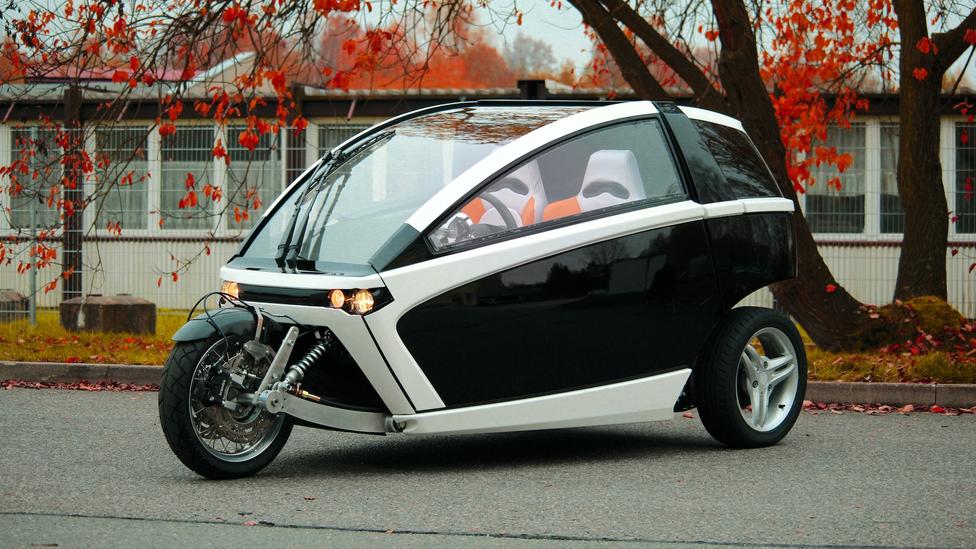Three-wheeled vehicles are all the rage among energy- and cost-conscious inventors looking to shake up the transportation status quo. The most stylish of these strange machines feature an aggressive stance, with two beefy wheels set at the front and a teardrop-shaped body that trails sleekly to a single rear wheel. The designs are compact, stable and easy to handle.
But turn them around — put that single wheel in the lead — and they tend to look and handle like a Bangkok tuk-tuk— or, worse, like a Reliant Robin.
That doesn’t have to be the case, as the recent unveiling of the Innvelo Three electric vehicle attests; its sleek lines are more Blade Runner than meter maid. That shape, by Leipzig, Germany-based industrial design firm Form & Drang, is what’s garnering the most attention, but there’s some solid thinking in the engineering, courtesy of technical partner, the research institute ICM – Institut Chemnitzer Maschinen- und Anlagenbau.
Two wheels in back make for a larger passenger/cargo compartment, important in the vehicle’s primary market, municipal fleets converting to battery-powered mobility solutions. It also happens to snow a bit in Germany, so it makes sense to double the rear traction. And as for three wheels instead of four? Three-wheeled vehicles (within some power and speed limitations) can be driven by licensed 16-year-olds in Germany, while traditional four-wheeled vehicles are off-limits until age 18. In the consumer market, creating a hot rod for the pre-18 set is a pretty sure bet.
Perhaps the biggest constraint in the design process has been the Innvelo’s targeted retail price range: €10,000-15,000 ($11,000-17,000). "There was not much room for extravagant materials or high-tech gadgets”, says Ronny Sauer, one of Form & Drang’s founders. "Even with must-haves like the big front window there were limitations; it could be curved in one direction only, otherwise the cost would rise.”
But, there is still the biggest problem of one-in-front tricycle design: their tendency to roll during hard cornering and off-centre braking. The best way to alleviate that tendency is to keep the center of gravity low and keep most of the car’s weight over the rear wheels. The two design factors that enable that — a front swing-arm suspension and the sporty, low-down seating position — also happen to be the aspects that set the Innvelo so stylishly apart.
The 880-pound prototype (pictured here) makes use of a pair of electric motors producing a combined 9 horsepower. Even so, the two-seater is capable of achieving 62 mph and offers a cruising range of about 60 miles. The company plans to build three models — an urban commuter car, a long-wheelbase cargo carrier and a sporty notchback coupe. At present, Sauer is road-testing the prototype. Production, he says, could begin by 2017 for a 2018 launch in Germany, with availability across Europe, Asia and the US following in quick succession.
If the Innvelo Three seems an odd design to take over the world, remember that Karl Benz’s 1885 Patent Motorwagen — generally accepted to be the first purpose-built motorcar — was a trike with a single wheel in the front. And look where that went.
(BBC)




www.ann.az
Follow us !











